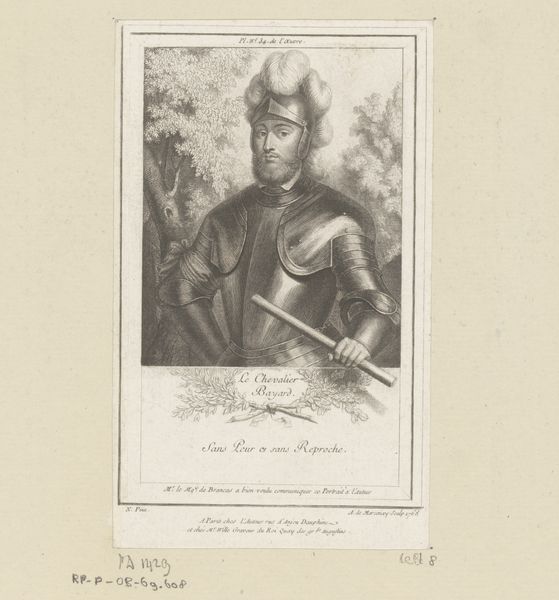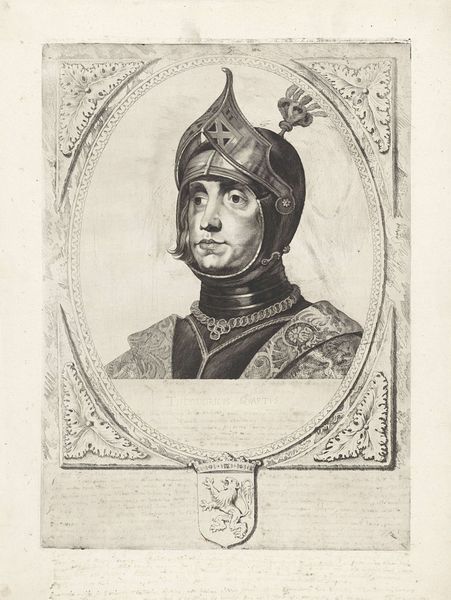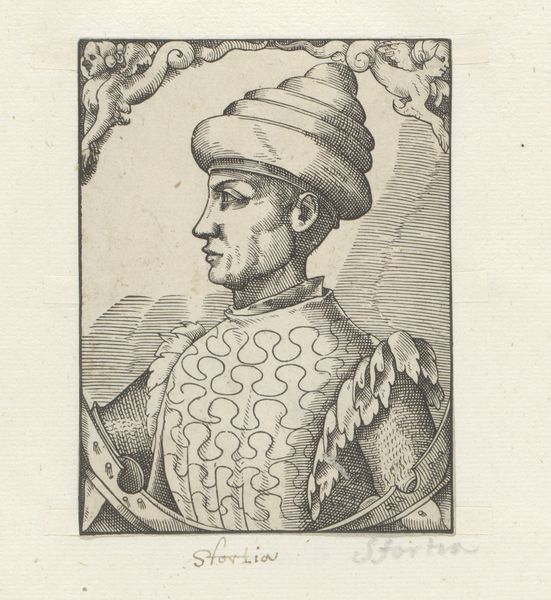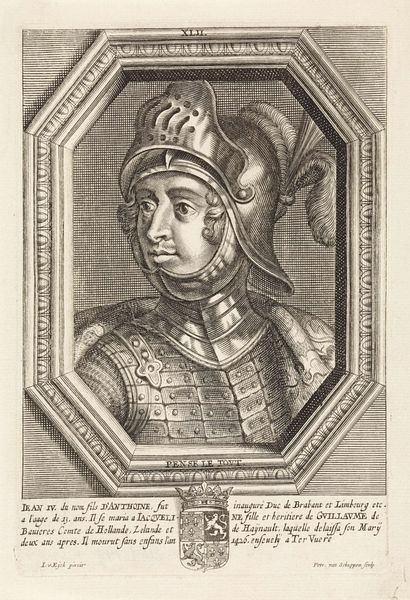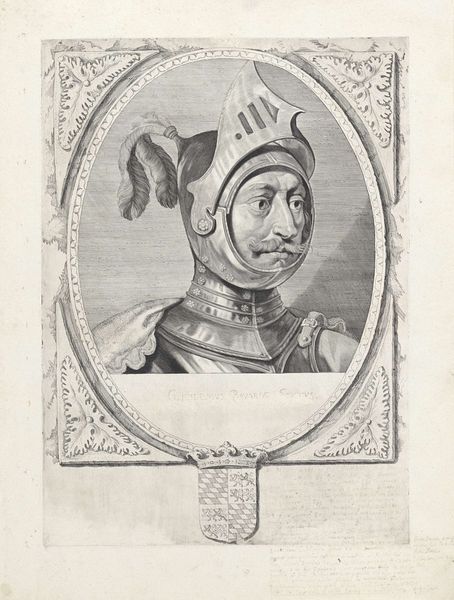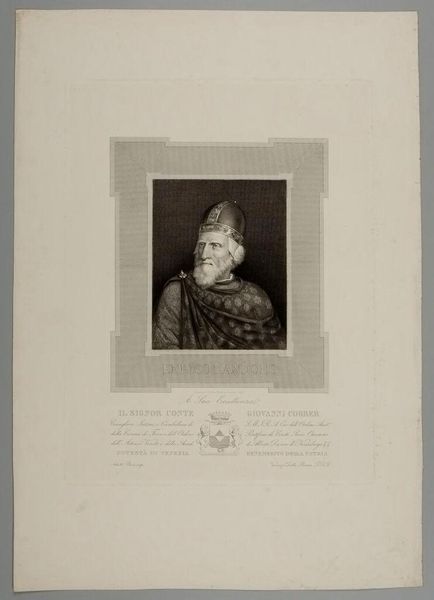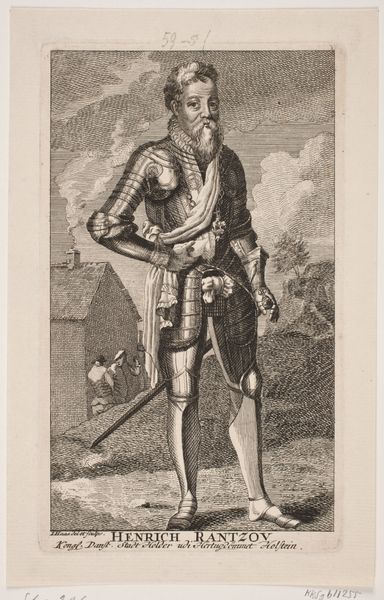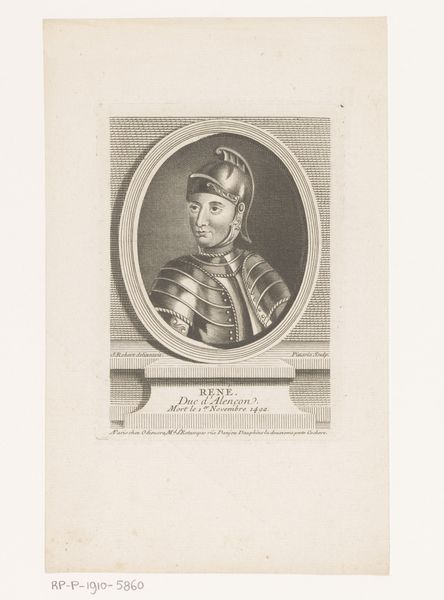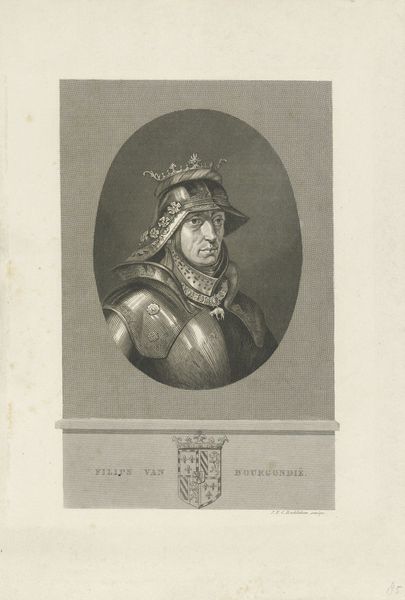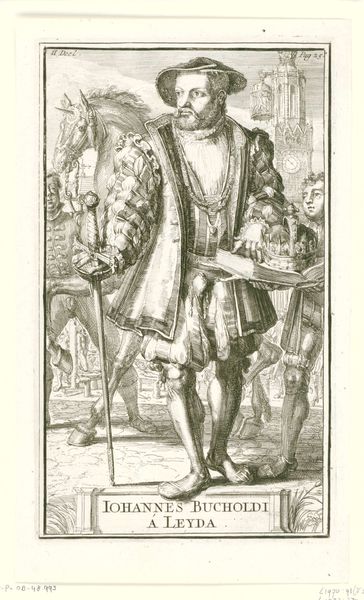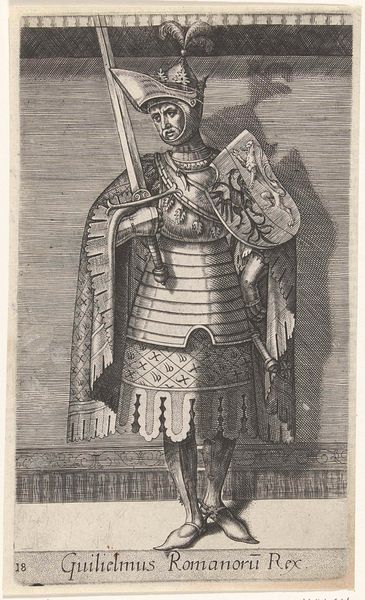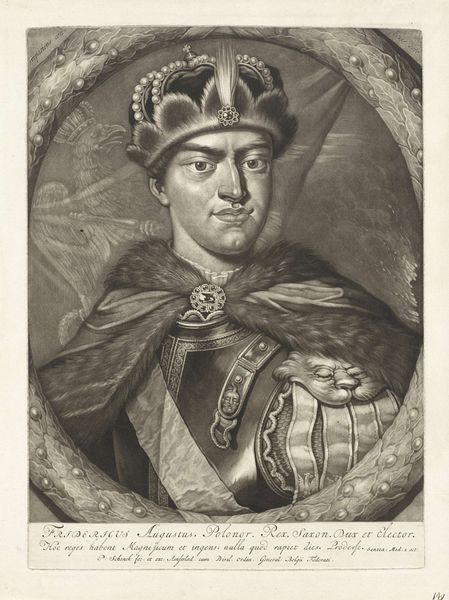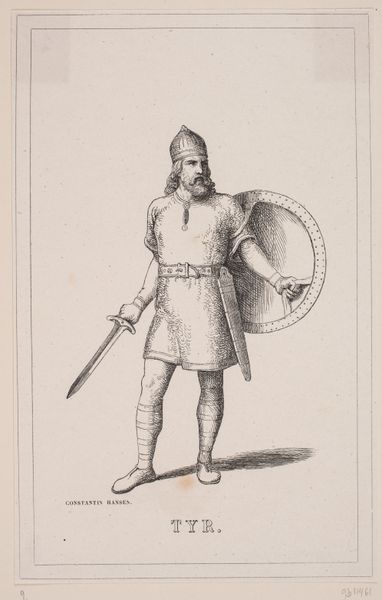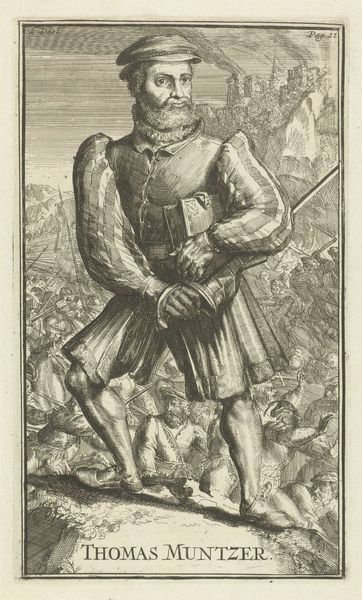
Dimensions: Image: 12.7 Ã 7.5 cm (5 Ã 2 15/16 in.) Plate: 15.2 Ã 9.2 cm (6 Ã 3 5/8 in.) Sheet: 20.8 Ã 13.9 cm (8 3/16 Ã 5 1/2 in.)
Copyright: CC0 1.0
Editor: Here we have Antoine de Marcenay de Ghuy's portrait of "Pierre de Terrail, Le Chevalier de Bayard." It's an etching, and the detail is incredible. The knight looks so stoic and formidable. What can you tell me about the social context of depicting military figures this way? Curator: This piece reflects the 18th-century's fascination with historical figures, particularly those embodying noble virtues. Depicting Bayard, a symbol of chivalry, served to reinforce ideals of leadership and national identity during a period of social and political upheaval. How might the original audience have interpreted the choice of Bayard specifically? Editor: Maybe as a call back to simpler times? A more straightforward form of honor? Curator: Precisely. It's also worth noting the role of such images in shaping public perception of historical figures, often glorifying or romanticizing them for ideological purposes. What do you think that little wreath symbolizes? Editor: Perhaps a kind of victory? Or maybe lasting peace? This gives me a lot to think about. Curator: Indeed, and it highlights how art functions within broader cultural and political narratives.
Comments
No comments
Be the first to comment and join the conversation on the ultimate creative platform.
